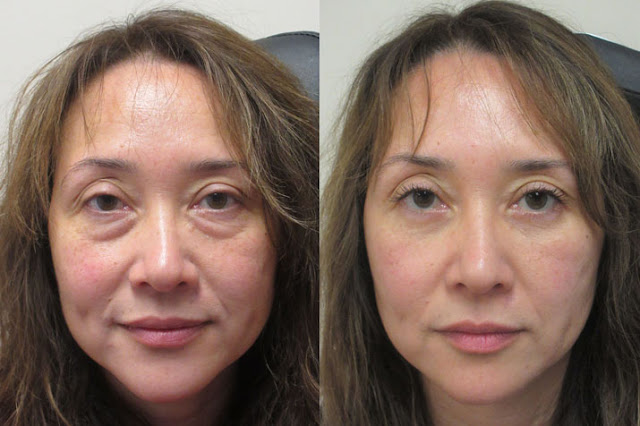12 things you should look into before considering plastic surgery in Malaysia
Cosmetic surgery procedures are on the rise globally and are also gaining local popularity nationwide in Malaysia. However, there have been reports of adverse outcomes including disfigurements and even death, arising from aesthetic procedures performed by incompetent medical and non-medical practitioners.
Although aesthetic medical practice has not been recognized as a medical specialty in Malaysia, it is scientific in its approach and practice. The scientific concepts underpinning aesthetic medical practice have resulted from work done and published in dermatology and plastic surgical literature, and is taught within the core curriculum of these two specialties.
Recent development in aesthetic medical practice has seen a growth in the number of general practitioners practising in this field. There is a lot of confusion as many types of doctors are involved in this space i.e. plastic surgeons, dermatologists, eye specialists, ear nose throat specialists, breast surgeons, gynecologists and general practitioners. Thankfully, the Malaysian Government has come out with guidelines on aesthetic medical practice to address most of the confusion.
Here are 12 things you should look into before considering cosmetic surgery:
1. Choosing the right doctor is by far the most important factor. Cosmetic surgical procedures bear risks and hence, it is crucial that you have your procedure performed by a qualified and Malaysian registered plastic surgeon. Not all plastic surgeons may boast breast augmentation as their specialty; therefore, it is important you do your research beforehand. Which doctor is popular for doing a good job? Are you happy with their collection of before and after pictures?
 |
| Image courtesy of idhospital.blogspot.com |
 |
| Image courtesy of www.pinoyfailblog.com |
 |
| Image courtesy of wonjinenglish.blogspot.com |
4. With Google search, you will get a list of search results and the top ones and the right column are advertisements. The search results are ranked according to your search keywords, your location and other factors based on Google search algorithm. So, how do you shortlist the few? Call up the centers and make your enquiries. Filter out those that are not able to provide you with the right information. A poorly trained staff tends to be a reflection of the centre as well. Do understand that a plastic surgery procedure requires team effort and poor support is a risk factor to the surgical procedure. Next, you Google again the prospective plastic surgeon’s name and the centre; and add in the keywords ‘forum’ or ‘reviews’ to see what other people have to say about them. If you know a friend or relative who has an operation done before, make sure that you talk to him or her. However, make sure she is a trusted friend. Some centres or surgeons do offer commission scheme or ‘patient get patient’ referral scheme. Therefore, do not just rely on information provided by a single person. Do your research thoroughly. A surgery is a surgery. Mistakes do happen.
5. If you are considering surgery, it is important that you make sure your procedure is performed under the right settings. Most individuals seem to think that if a doctor is performing their procedure, their life is in safe hands. For this reason, many do not have a problem allowing a doctor to perform their surgery in beauty salons, and some even in hotel rooms and in their own home. Most of these individuals are left with disastrous outcomes from the procedure, which can include infection, disfigurement and even death. It's clearly stated in the malaysian guidelines that invasive procedures like breast implant procedures are major procedures and have to be performed by a qualified plastic surgeon in an operation theatre at a hospital or an ambulatory care centre. Check whether a facility, hospital or clinic is registered or licensed under the Private Healthcare Facilities and Services Act 1998 (Act 586), call 03-88831277 or 03-88831311 or visit
http://medpcs.moh.gov.my
 |
| Image courtesy of www.seoultouchup.com |
 |
| Image courtesy of www.novasans.com |
a. Non-invasive procedures are defined as external applications or treatment procedures that are carried out without creating a break in the skin or penetration of the integument. They target the outer layer of the skin only.
b. Minimally invasive procedures are treatment procedures that induce minimal damage to the skin at the point of entry of instruments.
c. Invasive procedures are defined as treatment procedures that penetrate or break the skin through either perforation or incision with the use of knife, diathermy, ablative lasers, radiofrequency, ultrasound, cannulae and needles.
8. All aesthetic procedures are not completely safe. Some of the complications commonly encountered include anaesthetic reactions, bleeding, infections, scarring, pigmentary changes (hypo- or hyper pigmentation) and even death. When a procedure has a potential for serious complications, it may be categorised as invasive even if it involves minimal damage to the skin.
9. General practitioners are only allowed to perform non-invasive and minimally invasive procedures. The non-invasive and minimally invasive aesthetic medical procedures are as listed below:
a. Non-invasive:
i. Superficial chemical peels
ii. Microdermabrasion
iii. Intense pulsed light
b. Minimally invasive:
i. Chemical peel (Medium depth)
ii. Botulinum toxin injection
iii. Filler injection - excluding silicone and fat
iv. Skin tightening procedures-up to upper dermis (radiofrequency, infrared,ultrasound and other devices)
v. Superficial sclerotherapy
vi. Lasers for treating skin pigmentation
vii. Lasers for treating benign skin lesions
viii. Lasers for skin rejuvenation (including non ablative)
ix. Lasers for hair removal
10. Medical Specialists e.g. dermatologists are allowed to perform non-invasive, minimally invasive procedures and some invasive procedures as listed below:
a. Non-Invasive
i. Chemical peel (superficial)
ii. Microdermabrasion
iii. Intense pulse light (IPL)
b. Minimally Invasive
i. Chemical peel (medium depth)
ii. Botulinum toxin injection
iii. Filler injection – excluding silicone and fat
iv. Superficial Sclerotherapy
v. Lasers for treating skin pigmentation
vi. Lasers for skin rejuvenation (incuding fractional ablative)
vii. Lasers for hair removal (e.g long-pulsed Nd:YAG, Diode)
viii. Skin tightening procedure- radiofrequency, ultrasound, infrared up to upper dermis
c. Invasive11. Surgical Specialists e.g. plastic surgeons are allowed to perform non-invasive, minimally invasive procedures and invasive procedures. A surgical specialist need to perform aesthetic/cosmetic surgery in a clinic with Minor Surgery Room (MSR) or Operation Theatre (OT) at an “Ambulatory Care Centre” (ACC) or “Hospital”. Invasive procedures are as listed below:
i. Laser for treating vascular lesions
ii. Chemical peels (Deep)
iii. Ablative skin resurfacing lasers
iv. Hair transplant
v. Phlebectomy
vi. Tumescent liposuction
a. Abdominoplasty12. The final important step to help you achieve the best results for your augmentation is to plan your procedure well. Do your research, and never be afraid to ask your plastic surgeon any questions you may have. If possible, try to find and speak to other patients that have had the procedure. A personal insight can be very helpful. Ask your plastic surgeon if they can suggest patients to speak to, or search the Internet for websites or blogs that can help.
b. Blepharoplasty - Upper eyelid/Lower Eyelid
c. Breast Implant
d. Breast enhancement (other than implant )
e. Breast reduction
f. Brow lift
g. Fat grafting
h. Hair transplant
i. Implant - Face
j. Implant - Nose
k. Lasers, Ablative (including fractional & resurfacing)
m. Liposuction ( LA & < 1litre aspirate)
n. Liposuction ( GA / >1 litre)
o. Rhinoplasty
p. Rhytidectomy
q. Facelift
r. Mini Lift
s. Thread lift
t. Phlebectomy
Conclusion
At the end of the day, it is important to remember that things can still go wrong no matter how much planning and how many safety precautions are taken (due to unforeseen circumstances). Therefore, while you try to take every care to ensure the best and safest results for your procedure, do also monitor what you are feeling or experiencing after your surgery – if you feel that something is not right, do not hesitate to see your surgeon or go to a hospital. If you are supposed to go back for a follow up, please do so accordingly.
References:
- http://www.moh.gov.my/images/gallery/Garispanduan/GUIDELINES%20ON%20AESTHETIC%20MEDICAL%20PRACTICE_110613.pdf
- http://mmc.gov.my/v1/index.php?option=com_wrapper&Itemid=50
To look for a plastic surgeon in Malaysia by location, please check out Cosmetic Surgery Malaysia.



Comments